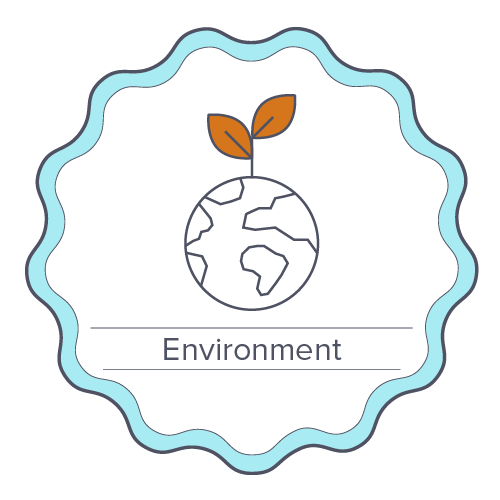A single grain of pollen is invisible to the human eye, but the role it plays in our world is seen by everyone.
Much of what we eat would not be possible without pollen, or pollinators, the insects that help transport pollen between flowers. About three quarters of our major food crops require pollinators, according to the U.S. Department of Agriculture.
At PPL Electric Utilities, we manage more than 50,000 acres of right-of-way easements under our power lines and that gives us a unique opportunity to help provide pollinator-friendly habitat. We’re currently conducting research to develop a cost-effective seed mix of native, pollinator-friendly plants that can be used during restoration of transmission line and substation projects.
In addition to providing an ideal habitat for pollinators, the right mix of native plantings would save costs by potentially requiring less vegetation management and treatment. The final seed mix that is selected will be used whenever land is disturbed either for building new power lines or maintaining existing ones.
According to the USDA, some scientists estimate that one out of every three bites of food we eat exists because of animal pollinators like bees, butterflies and moths, birds and bats, and beetles and other insects.
With numbers like that, we know helping pollinators thrive is a worthy cause.



Kudos to PPL for doing this!!!!
Amazing! Thank you for thinking about the environment 🙂
I just wanted to say thank you!. It is very refreshing to see such a big company who has so much to offer go above and beyond to help battle against so many of our changes we see in climate/ habitats. Thank you for helping our planet and food sources in big ways!
Hallelujah!! Great to hear this! Thanks.
Great… And about time! I suggested this kund of thing back in the 1980’s, but was told it wouldn’t be financially feasible. I’m happy to hear that has changed.
The original idea came to me (& prbably to others) when I saw the power lines going across my uncles crop feilds at his farm. I thought, if they could go across corn & wheat, why not fliwers & bushes (like blueberry or similar plants) or even other crops or herbs! If seeded with some kind of crop, the extra food could be donated to food banks… & the crops could be maintainef & harvested by volunteers!
This news isn’t quite like my idea, but it’s still a very good one!t’
What a great idea, our pollinators need all the help they can get!
This is wonderful! More people need to be educated in our natural pollinators.
Great job! Thank you!
I have land that I am looking to plant pollinator friendly seed mix on as well. Can you publish what mix you use ?
Good Afternoon Kevin,
We are researching this on our end and hope to provide additional information in the future.
Thanks for reaching out to us!
Thank you PPL. Much of my back yard is a pollinator garden. No matter how big or small a pollinator space is, it’s beautiful to look at in full bloom and it requires very little maintenance once established. It is also great entertainment to watch the bees, butterflies and birds especially hummingbirds visit from early morning through dusk when the fireflies appear. Artificial light from houses, buildings, and car headlights are a threat to fireflies who benefit from as much naturally lit space as possible. Everyone can do something every day to help the environment all year long and planting for pollinators and adding to the garden is something that I look forward to every spring that brings great enjoyment through the warm months.